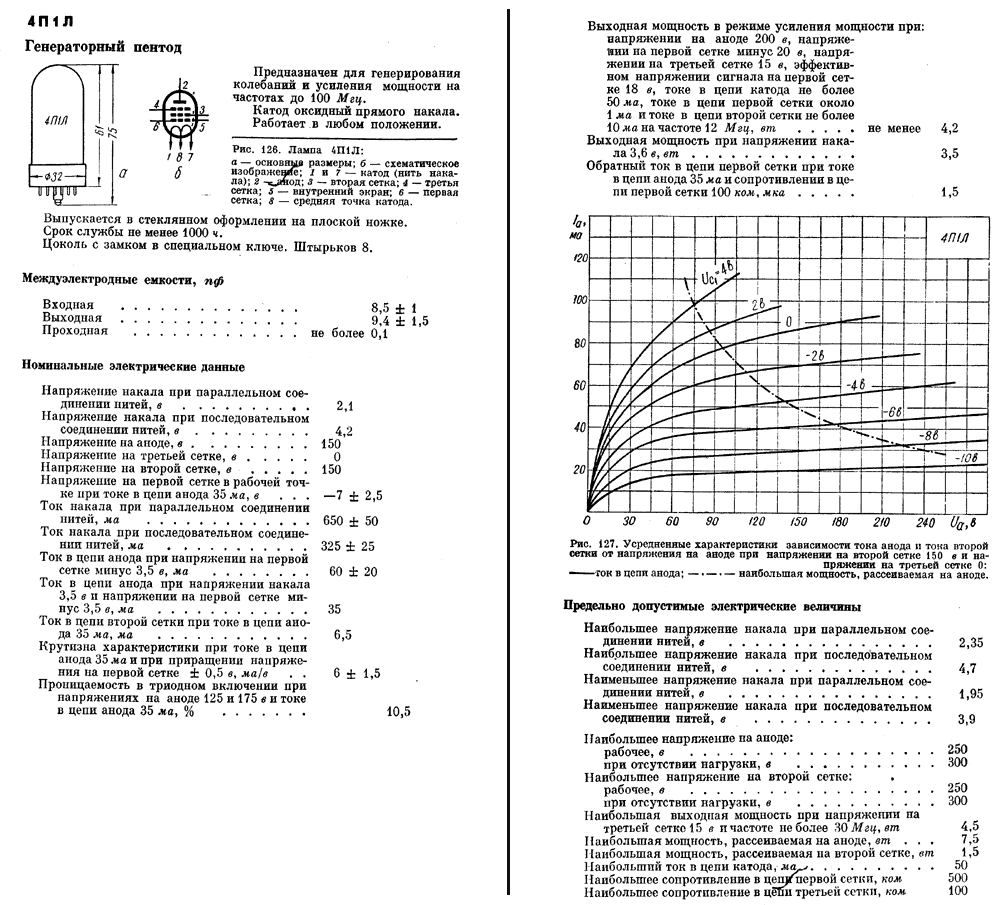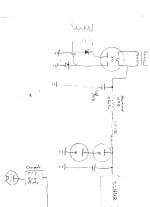Still gathering parts. Going to shear my two pieces of copper plate into 4 pieces which means I now need to re-make the wooden cases I already had. I said I would make a true dual mono line stage so I will stick to it. I have my Filament regulators from Rod and two plate CCS's from K&K audio and my SSHV2 boards and parts that I just ordered yesterday. The transformers, tube sockets, and a variety of #26 tubes I have. Its just a matter of time and this is one project that I'm not going to let it get the best of me.
I'm still thinking about the VR tubes ahead of the SSHV2 board.
I'm still thinking about the VR tubes ahead of the SSHV2 board.
I'm still thinking about the VR tubes ahead of the SSHV2 board.
The purple glow looks pretty. But that's about the only thing they'll contribute if you implement the sshv2.
I won't argue with that. I had a shunt reg in place before the VR tube, with better specs than the sshv2, low noise and all that, but I like the blue glow and the lower heat.  Also, the volume needed to hear the noise of the VR tube is so high that I can't possibly listen to music. So... for now, I stay with the purple glow.
Also, the volume needed to hear the noise of the VR tube is so high that I can't possibly listen to music. So... for now, I stay with the purple glow. 
I still encourage you to try all that you wish and make up your own mind. IMHO, that's what diy is almost all about. You do what YOU want.
I still encourage you to try all that you wish and make up your own mind. IMHO, that's what diy is almost all about. You do what YOU want.
I like the look thats true. I also have to drop some voltage prior to SSHV2 stage so I have my choice of using VR's or resistors to drop some voltage.
If you use VR in series to drop voltage regulation will be worse than without it.
In the article he mentioned he used two (2K) 20 watt power resistors in series with a 100 mfd cap between them
This is the project I was referring to, I apologize that my memory of it wasn't quite right. He was using the electrolytic as sort of an ultrapath cathode bypass. My advice from the designer at the time was to just use a SS shunt and forget the VR tube, but..
It is interesting that your proposal of using a seprate CCS after the VR tube wasn't tried on that project, I have been thinking the past few days about how it would work. With the #26 it seems a promising experiement and as Ikoflexer said, this is an empirical game. The Ra of the #26 is high enough that the high ohm output impedance of the VR tube shouldn't hurt matters. Only negative I can think of at this point is this probably wouldn't work with the 4P1L (too much current, too low RA). But I think we would all be interested in your trials.
My power supply under consideration.
Just consider my transformer, caps, choke and VR stage as it will connect the the SSHV2 CCS board and EVERYTHING will be the same as the nicely drawn posted schematic in post 1552.
My supply will hook up to the circuit as shown in post 1552.
As I mentioned before there will be a power supply and filament supply for each channel. I will use Rods filament supply reg board, the SSHV2 after the VR and a K&K audio Cascode CCS plate load
Just consider my transformer, caps, choke and VR stage as it will connect the the SSHV2 CCS board and EVERYTHING will be the same as the nicely drawn posted schematic in post 1552.
My supply will hook up to the circuit as shown in post 1552.
As I mentioned before there will be a power supply and filament supply for each channel. I will use Rods filament supply reg board, the SSHV2 after the VR and a K&K audio Cascode CCS plate load
Attachments
Last edited:
I will be very appreciative for any help you might offer. This is all new to me as I have not played with CCS's in supplies and plate CCS's and heater regulators before. So please be easy on me for my stupid questions as I am trying to learn and I'm sure some of the learning will not be easy.
Goodness this is a large thread.
I am currently starting work on a 26 pre, with help from andyjevans and Rod. I find it a really interesting design - I just wondered if anyone had thought of using it in studio gear, an output stage for a summing mixer for example?
Cheers
Charlie
I am currently starting work on a 26 pre, with help from andyjevans and Rod. I find it a really interesting design - I just wondered if anyone had thought of using it in studio gear, an output stage for a summing mixer for example?
Cheers
Charlie
Goodness this is a large thread.
I am currently starting work on a 26 pre, with help from andyjevans and Rod. I find it a really interesting design - I just wondered if anyone had thought of using it in studio gear, an output stage for a summing mixer for example?
Cheers
Charlie
Your concerns in that application I think would be dynamic range and SNR. IF the mix was fairly uncompressed to begin with, it will add the sort of compression studio's should be using. Will take some tricks for studio quality noise levels, but I wish more studios would look into this sort of mastering.
Not that, if you are familiar with using tubes in the studio I am sure this would be a fantastic application.
Got to be worth a try
Using directly heated tubes in a studio application is a really interesting challenge. For a start the noise levels need to be low, but noise itself isn't really an issue - filaments can be kept pretty quiet. Microphonics probably is an issue, though. Reports of microphonics with the 26 vary - I've never had a problem with my 4mm thick aluminium top plates, but in critical applications others have had issues and have used things like grounded metal shields around the bottle.
The chassis needs some thought - needs to be fairly massive for a start. The other thing for studio use is height. All directly heated tubes need to be vertical - no exceptions I know about. So you're talking an absolute minimum of 3U rack size - 132mm.
And then items like chokes and transformers need to be kept away from the tubes. All needs some thought, but the sound quality should make a real difference.
Andy
The chassis needs some thought - needs to be fairly massive for a start. The other thing for studio use is height. All directly heated tubes need to be vertical - no exceptions I know about. So you're talking an absolute minimum of 3U rack size - 132mm.
And then items like chokes and transformers need to be kept away from the tubes. All needs some thought, but the sound quality should make a real difference.
Andy
All directly heated tubes need to be vertical - no exceptions I know about.
According to datasheet 4P1L works in any position:

Using directly heated tubes in a studio application is a really interesting challenge. For a start the noise levels need to be low, but noise itself isn't really an issue - filaments can be kept pretty quiet. Microphonics probably is an issue, though. Reports of microphonics with the 26 vary - I've never had a problem with my 4mm thick aluminium top plates, but in critical applications others have had issues and have used things like grounded metal shields around the bottle.
The chassis needs some thought - needs to be fairly massive for a start. The other thing for studio use is height. All directly heated tubes need to be vertical - no exceptions I know about. So you're talking an absolute minimum of 3U rack size - 132mm.
And then items like chokes and transformers need to be kept away from the tubes. All needs some thought, but the sound quality should make a real difference.
Andy
Hi Andy,
It seems like a really interesting concept to try out, given the praise it has got on this thread alone. I was looking at some of our designs at work today, which are 3U and 4U (so already quite big) and was thinking of the practicle side to implementing the 26 - I really think that the issues you mentioned could be solved with careful planning, and maybe some thinking outside the box.
I'm looking forward to getting this line amp up and running - should be an interesting challenge!
Charlie
Just on a maintenance standpoint alone it would not be practical to use a 26 in a recording studio and or radio station. The 26 takes a lot of circuitry to obtain it clean clear output. Studios would not have the time to keep it running correctly because of being booked non-stop all day long. Another thing to consider is the tube availability and cost. They haven't made the 26 for probably 80yrs or so. Never worked in a studio yet that uses tube gear for mix purpose or recording purpose. You might hear a tube amplifier on a pair of monitors but that would be about it.
Leave the 26 where it belongs...in your home system.
Quote
use separate floating power supply's of 1,5 V ( a battery is absolute humfree
Tried batteries and still had hum.
Leave the 26 where it belongs...in your home system.
Quote
use separate floating power supply's of 1,5 V ( a battery is absolute humfree
Tried batteries and still had hum.
- Home
- Amplifiers
- Tubes / Valves
- #26 pre amp
